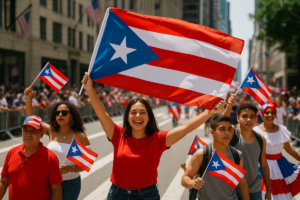
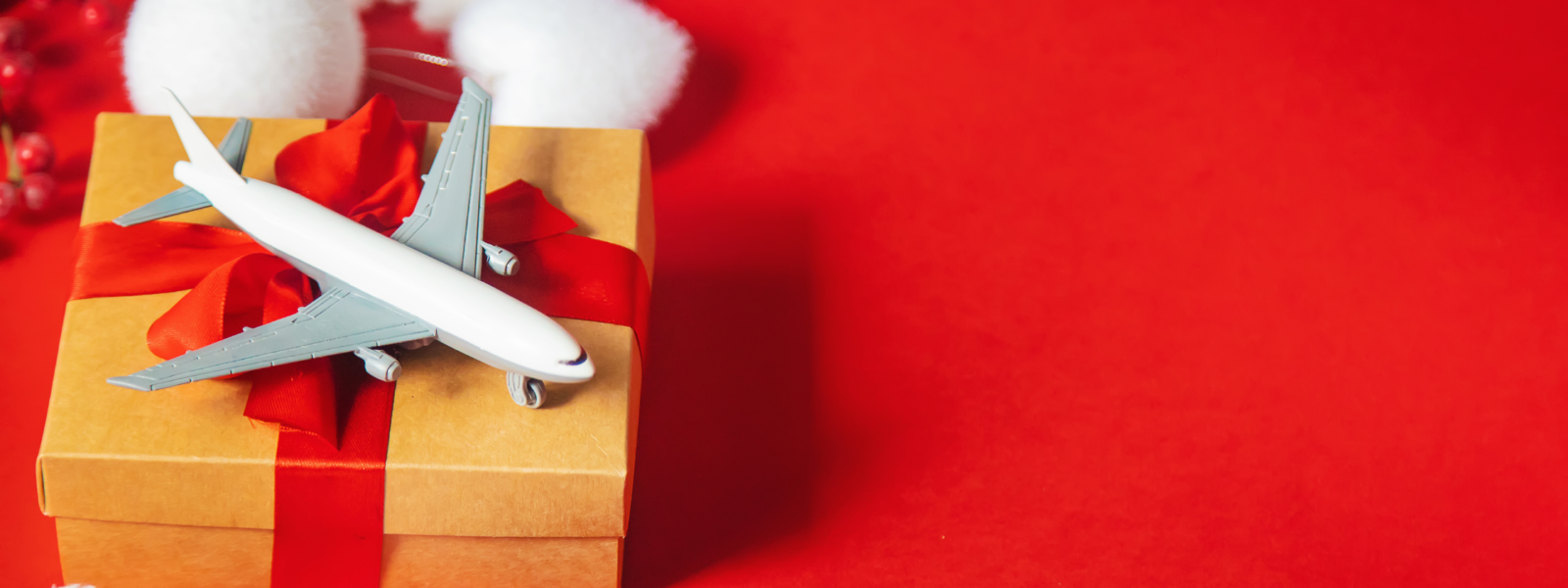
How do different countries celebrate Christmas?
It’s that time of the year again – time for eggnog, gifts, joy, lights, cookies, and a lot more. What Christmas is for some of us may not be the same for the rest of the world. Have you ever wondered what it is like to celebrate Christmas in Germany? What about Christmas in Japan?
We would like to offer you a sneak peek into Christmas around the world. Read on to find out how other people celebrate the season.
Jul in Denmark
Previous to the actual Christmas day, several Christmas markets (Julemarked) pop up around the country, selling handmade crafts and delicious snacks!
In Denmark, it is fairly common to celebrate julefrokost (Christmas lunch) with your coworkers and friends, from the first of November to the 24th of December. Snapps are the preferred drink during these julefrokoster, and don’t forget your presents!
A common game that is played during these lunches is the pakkeleg. Each guest will bring a wrapped present, and leave it on a pile on the middle of the table. After dinner, and with the help of some dices, it’s time to play! Set an alarm for the amount of time you choose, and roll the dices. If you get a six, you can choose a present from the pile, but don’t open it yet! Once all the presents have been sorted out, it’s time for the second round.
For this second round, instead of taking the presents from the middle of the table, you steal them from your friends! Again, set up an alarm, roll the dice, and if you get a six you can steal a present. Once the time is up, it’s over! Time to open the stolen presents!
Traditional foods you eat in Denmark for Christmas time are risengrød (rice pudding), gløgg (mulled wine), æbleskriver (apple slices), among others.
Another tradition for Christmas day is singing carols dancing around the Christmas tree, decorated with candles to bring the hygge to the room.
During Christmas Eve, Julemanden will bring presents to well-behaved Danish kids. This Julemanden is relatively new in Denmark. Before World War II, those in charge of bringing presents to kids were the Nisser, Christmas elves.
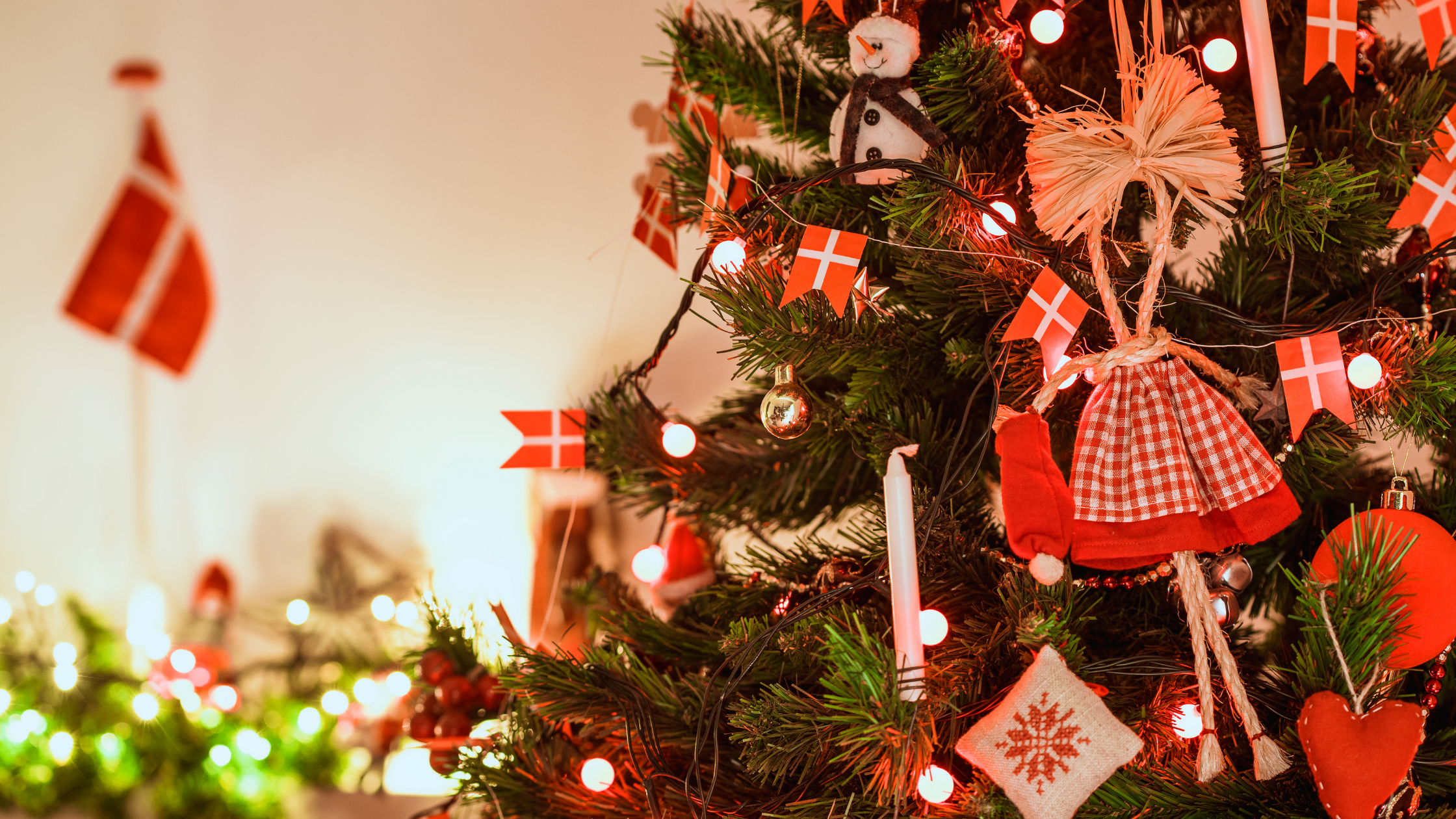
Danish Christmas tree
Weihnachten in Germany
With the Advent celebrations, the Christmas season starts at the end of November. Christmas markets (Weihnachtsmärkte) open all around the country and remain open until Christmas Eve. These markets will sell delicious snacks like sweet roasted almonds, Lebkuchen hearts (gingerbread), and Glühwein (mulled wine)!
Christmas trees have been used in Germany since the late Middle Ages! Nowadays, one of the most common decorations for the tree is the Weihnachtsengel, the Christmas Angels. It’s tradition to decorate the Christmas tree while singing O Tannenbaum, Ihr Kinderlein Kommet, and Stille Nacht.
Kids don’t have to wait for the 24th, because the night of the 5th of December, Sankt Nikolaus will come around! Kids would leave their polished boots in front of their rooms, in hopes that Sankt Nikolaus and his helper Knecht Ruprecht will leave some snacks and candies inside them! But only if they haven’t been naughty throughout the year. Otherwise, they might find some coal inside the shoes!
In Southern Bavaria, the celebration of St Nicholas’ Night is celebrated differently. Men dressed up with demonic-like costumes and furry coats, to replicate Krampus Nacht and his friends.
On December 24th, der Weihnachtsmann (Santa Claus) will leave the main Christmas presents. Often, children will write a letter to Weihnachtsmann to ask for the presents they wish for.
The most common foods for a German Christmas dinner are duck, goose, rabbit, or a roast as the main dish. As side dishes, we can often find apple and sausage stuffing and potato dumplings. Don’t forget your fruited bread Dresdner Stollen if you want to have an authentic German Christmas dinner!
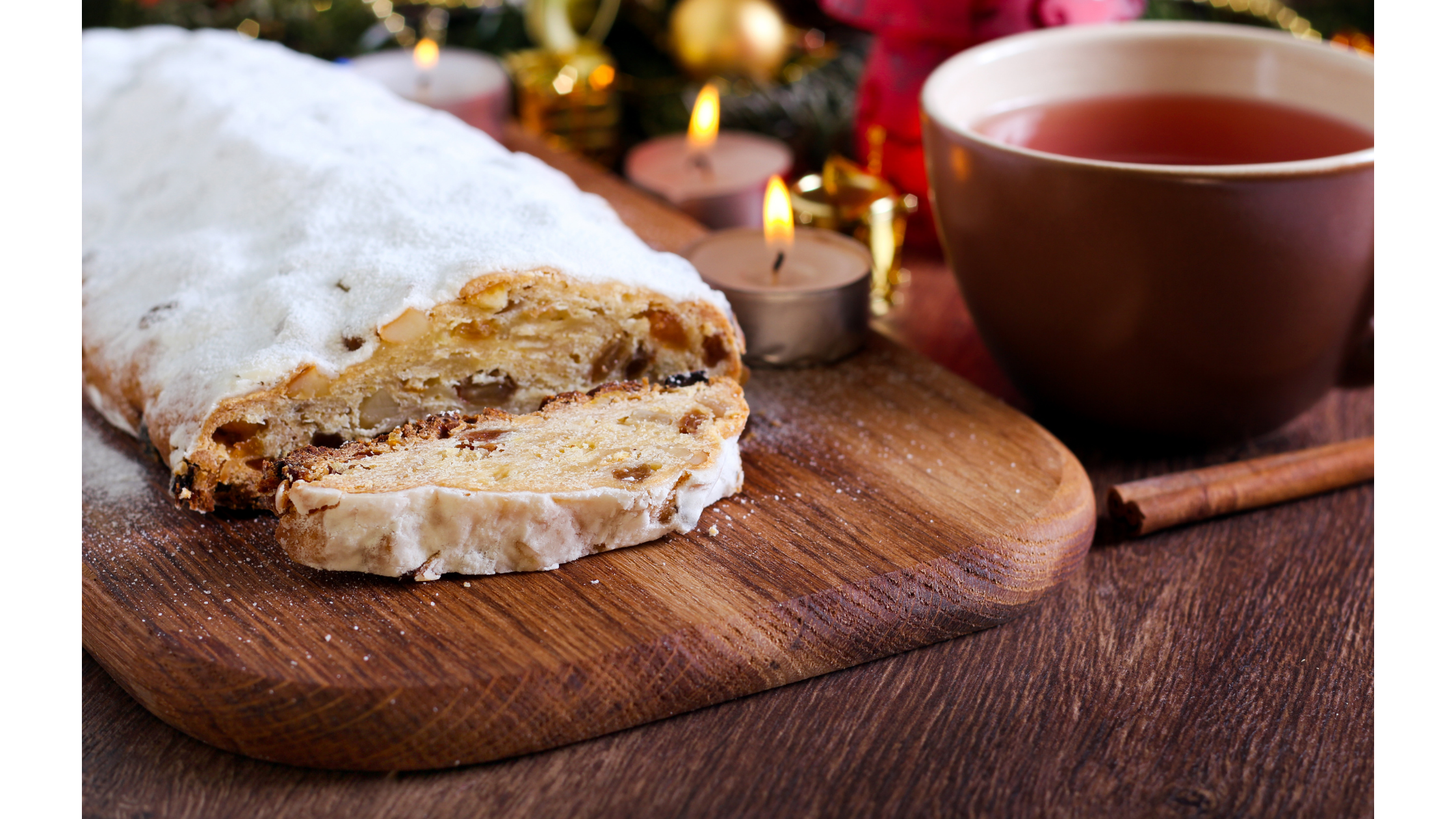
German Dresdner Stollen
Navidad in Spain
Christmas Eve on December 24th is known as Nochebuena. After eating dinner at home, people usually attend the Midnight Mass or Misa del Gallo (The Mass of the Rooster). The dinner would have consisted of turkey stuffed with truffles or duck. Shellfish and mollusks are ofter served as the second course. Popular Christmas desserts are mazapán (almond paste), turrón (honey and toasted almonds dessert), and mantecados (shortbread biscuit made out of lard, flour, and sugar).
People often sing villancicos (Christmas carols) to ask for the aguinaldo (money, usually, or a small gift), usually accompanied by tambourines, drums, and zambombas (a percussion musical instrument).
In Spain, there are four official languages. Here you can see how to say “Merry Christmas” in each one of them!: Feliz Navidad in Spanish, Bon Nadal in Catalan, Bo Nadal in Galician, and Eguberri in Euskera (Basque Country’s language).
On December 28th, Spaniards celebrate Día de los Santos Inocentes (Day of the Innocent Saints), something like an April Fools Day in the UK and USA. People will try to trick you into believing a fake story or play some silly jokes. The 28th of December remembers the innocent babies (hence the Santos Inocentes name of the day) that were murdered following King Herod’s orders while trying to kill the baby Jesus.
Nochevieja (The Old Night), or New Year’s Eve, is time for another celebration. Spanish families gather to have dinner (very similar to the one on the 24th). Get your 12 grapes ready, because you will eat one with every clock stroke at midnight! Each grape represents the next year’s months, so finishing all of them on time will grant you good luck for the following year!
The eve of the 5th of January is a date that all Spanish children remember very well, for is the night that Los Tres Reyes Magos (the Three Wise Men) will come with presents! Those Three Kings that visited baby Jesus when he was born are the same that travel to every house leaving gifts to those well-behaved kids. The children will often write letters to the Wise Men, asking for their wishes. The night of the 5th, kids will leave a bucket of water for the camels that bring the three Kings, and some milk and cookies for them.
The Kings Parade happens on the 6th of January, when the Three Kings, Melchor, Gaspar, and Baltasar, go around town throwing candies to kids and adults. They are often accompanied by elves and helpers, and a marching band playing music.
This day, the Roscón de Reyes is eaten with the family. This roscón is filled with cream, and both a dried bean and a little figurine of one of the Three Wise Men. If you find the dried bean on your portion, you are in charge of buying next year’s roscón! If you get the figurine, you are crowned with the paper crown that comes with the roscón.
For decorations, it is pretty common to find a Bethelem portal in every house. They can go as simple as just the baby Jesus, Maria, and Joseph, to a humungous display that shows the entire Bethelem. Usually, these displays are settled at main squares or city halls, and everyone is welcome to go and take a look.
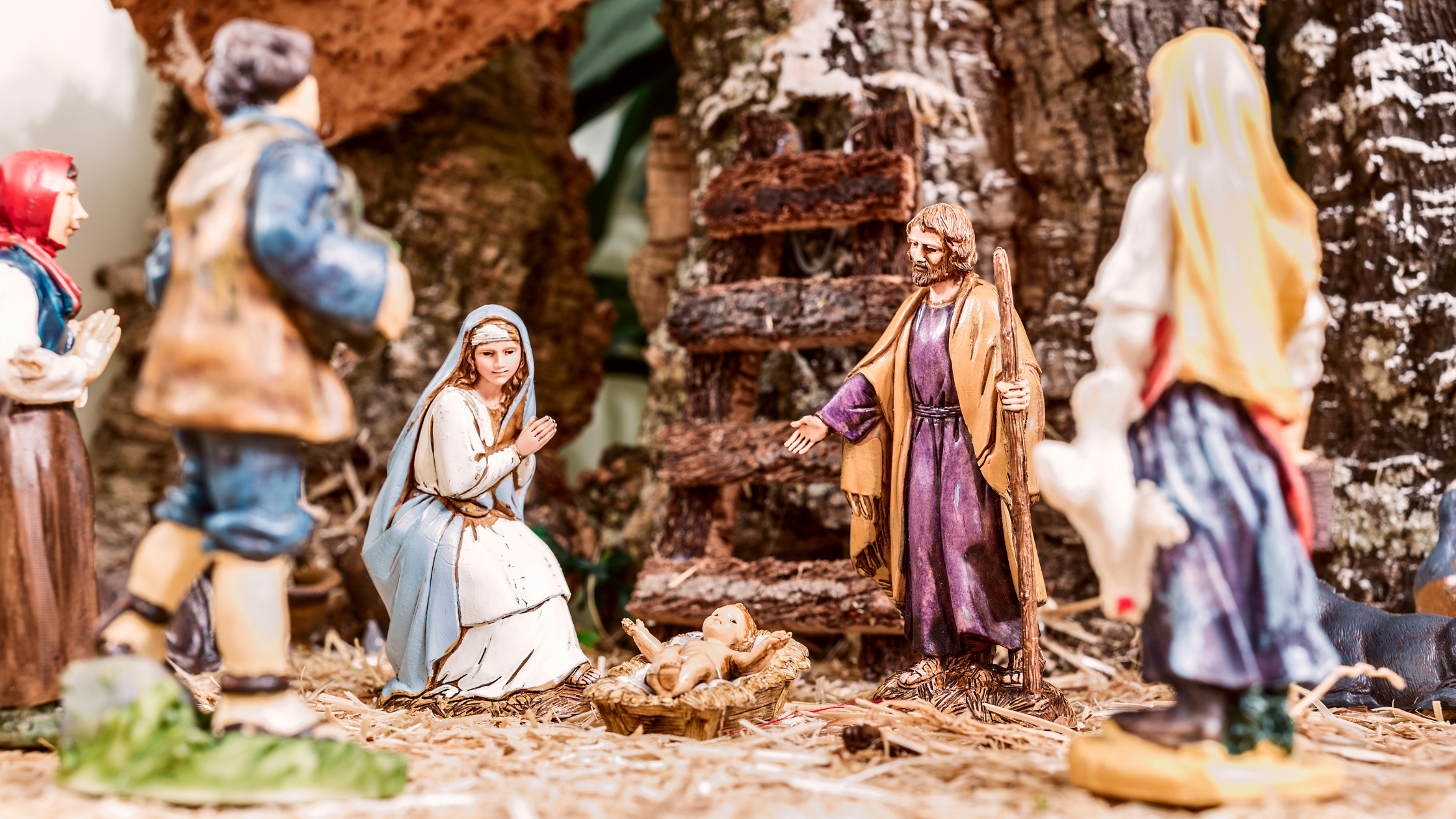
Spanish Portal de Belén
クリスマス(Kurisumasu) in Japan
Only recently Christmas has been celebrated in Japan. Christmas time is seen as a time to spread happiness, rather than a religious festivity because Japan has a majority of Buddhists and Shintoists, and just a small percentage of Christians. Actually, Christmas Eve is more of a romantic celebration! Couples exchange gifts and go out for romantic dinners or walks around the city.
The traditional dessert for this time of the year is the Kurisumasu keki (Christmas cake), a shortcake with cream and strawberries. It’s said that this tradition started in 1910 in Fujiya (Ginza). The most common dinner for Christmas is… fried chicken! In fact, KFC’s Christmas menu has become a tradition for this festivity.
Japan has been adapting different traditions from Occidental countries for Christmas time. The Christmas lights are not an exception! The cities are covered in lights, and every street is a show.
Santa Claus is another tradition that has been gladly adopted by Japanese people, known there as サンタクロース (Santakurosu). But they already had Hoteiosho, a Japanese Buddhist god of good fortune, even though it’s not really related to Christmas.
Tokyo Disney shows its parade every year during Christmas, and it’s not only a families treat, but also for couples! As we mentioned before, Christmas in Japan is seen as a romantic, presents exchange festivity.
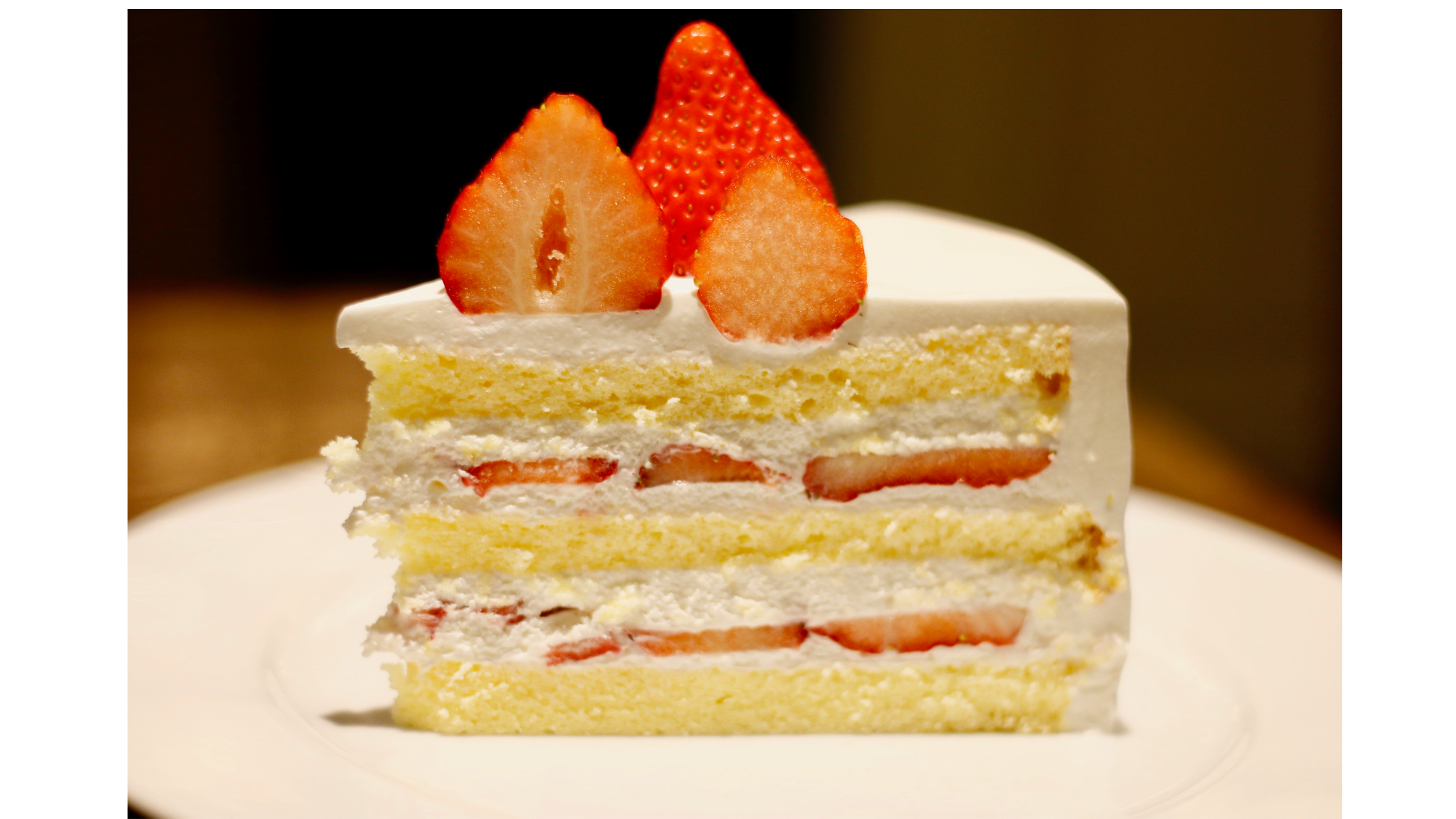 Kurisumasu keki (Japanese Christmas cake)
Kurisumasu keki (Japanese Christmas cake)
Christmas in Canada
Plenty of traditions that Canada holds now have French, English, Irish, Scottish, Norwegian, and first nation influences.
Christmas traditions in Canada start in December. Christmas trees are decorated, socks are hanging on the fireplaces ready for Santa, and the houses are lighted by Christmas lights.
The most common Christmas dinner is roast turkey with vegetables, mashed potatoes, and veggies. Traditional desserts include Christmas plum puddings and mincemeat tarts.
Toronto holds the oldest and largest Santa parade, that started in 1913. Inuits celebrate Sink Tuck, where dances and present exchanges take place, to celebrate that the winter came and a new year starts soon.
Have you ever heard about Mummering? It’s a tradition that takes place in Newfoundland and other small villages and towns. People dressed up in disguise and go door by door, asking “Are there any Mummers in the night?”. It’s also known as Janneying, and if you allow them to enter your home, they will say thank you by performing some dances, songs, jokes, or recitations. The hosts need to guess who’s the Mummer before offering it something to drink or a snack, probably gingerbread cookies!
Something similar happens with Belsnickeling. This tradition, brought by German immigrants, has the same principle as the Mummers, only dressed up as Santa Clause.
A French tradition is the Réveillon, a party held on Christmas Eve. While the families are at the Midnight Mass, Père Noel (Santa Claus) will go to their homes and leave gifts under the tree.
On January 6th, in Quebec, there is a celebration called La Fête du Roi (King’s Day). A cake is baked, and in the middle, a bean is hidden. If you get the bean, you’re lucky! You’ll be crowned king or queen! Does it ring a bell? Sure does! We talked about the Spanish Roscón de Reyes before, with a very similar premise.
A Ukrainian tradition brought by Ukrainian immigrants is the typical 12 meal dishes for Christmas dinner! These 12 dishes represent Jesus’s disciples. These dishes don’t contain any eggs, meat, or milk in them, traditionally.
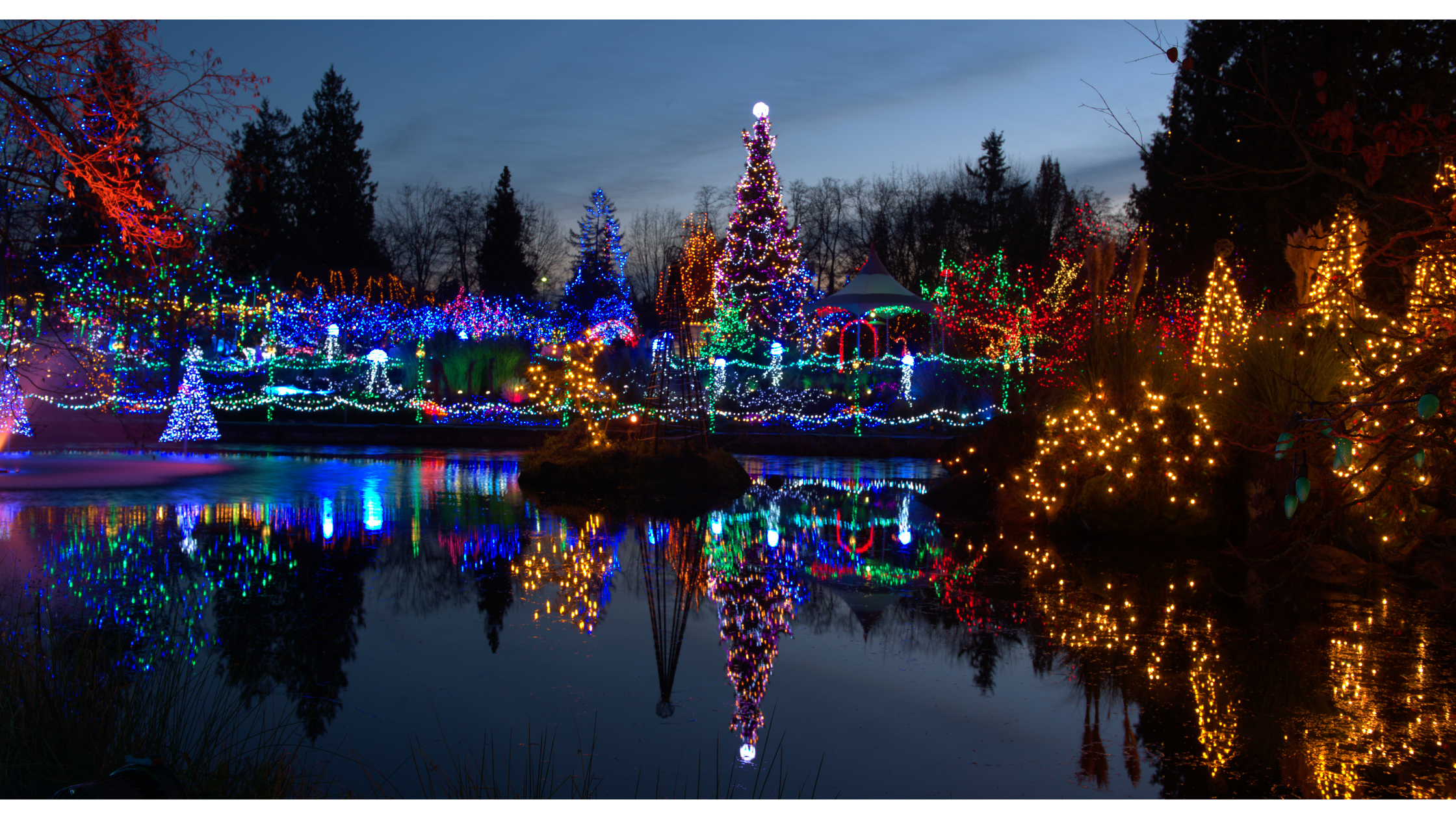
What to do at home for Christmas
Staying at home during Christmas is the best idea this year. So, in order to have a good and fun time at home, here we collected some tips and ideas for you!:
- Get crafty and make some Christmas handmade decorations such as:
- Dried oranges – cut the orange slices in circles and leave them on the heater for a couple of days, when the juice dries out, pierce them with a needle and thread, and voilá you can hang them on your Christmas tree.
- Create centerpieces with things gathered around the house and your garden.
- Decorate your house with candles, tealights, and fairy lights to lift up the mood and get all cozied up!
- Melt some wax colorful crayons or candles by heating them with fire and dripping them into a form (could be made out of toilet paper). Stick a knot at the bottom and hold it while dripping the wax. This way you’ll create new colorful candles according to your preference!
- Bake delicious Christmas cookies and pies, especially gingerbread that can be decorated with egg-whites and sugar, so you and your family can create beautiful animals or Santa Claus. In fact, you can create anything!
- Play Danish pakkeleg, which is a traditional Danish gift exchange game. This game is usually played during the Christmas holiday which involves players exchanging gifts based on rolling dice. Who rolls sixes, gets to keep the gifts.
- Cook some mulled wine! A nice tip – boil oranges, cloves, cinnamon, and honey together and add the wine in the end. This way, you won’t lose alcohol by boiling it. Only for the adults though.
- Play board games with your family dressed up as Santa, Angel, Reindeer, or any other Christmas character.
- Watch a marathon of Home Alone!
- Sing carols.
- Go for ice-skating at a local ice rink.
- Hang some Christmas stockings above your fireplace. You can either buy some or crochet your own!
- Play Secret Santa, this way you can save up money on gifts, yet everyone gets something! And it’s funny!
- If you have kids, read them a bedtime story under/next to the Christmas tree. You can also bring mattresses and sleeping bags and sleep there together! What a beautiful atmosphere!

Happy Holidays from the LuggageHero team and Stay Safe!


